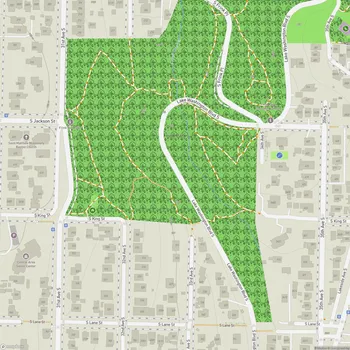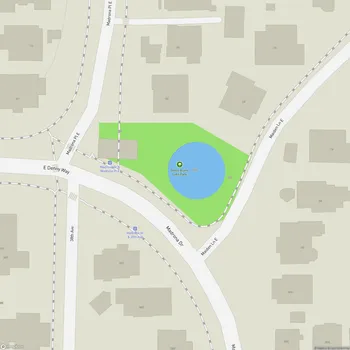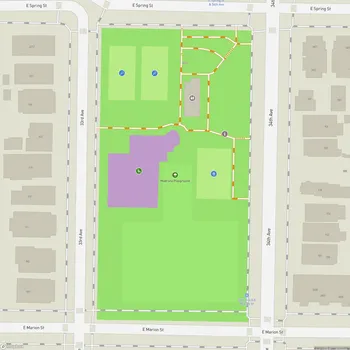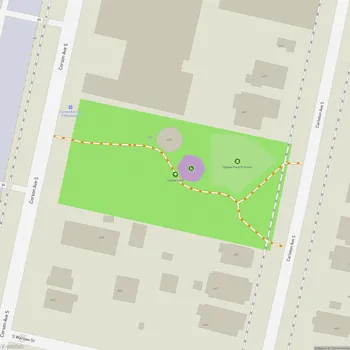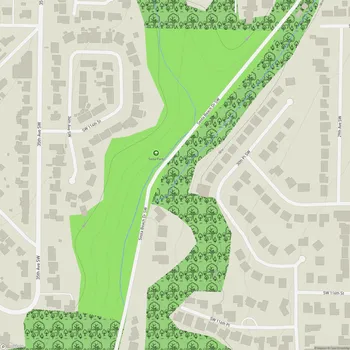Freeway Park
Interactive Park Map
About Freeway Park
Breaking Boundaries: A Park Above Traffic
Set in the bustling heart of Seattle lies Freeway Park, a 5.2-acre green oasis with a fascinating twist - it's actually built right on top of Interstate 5. Opened on July 4, 1976, this innovative space was the first park in the world constructed over a freeway, creating a connection between downtown Seattle and the First Hill neighborhood.
The creative minds behind this architectural marvel? Lawrence Halprin & Associates, with the project spearheaded by designer Angela Danadjieva. Her vision blended bold brutalist concrete structures with soft, natural elements to create something truly unique in the urban landscape.
A Concrete Jungle (In a Good Way)
Wandering through Freeway Park feels a bit like exploring a beautiful puzzle. The space features a series of connected plazas with irregular shapes, bordered by board-formed concrete walls and planters. The resulting maze-like environment creates an unusual experience - imagine an Escher drawing brought to life as a garden.
The park's main feature is the Canyon Fountain, a concrete structure designed to mimic a natural gorge. When running, water flows down its sides, providing visual interest while helping to mask the sound of traffic below. Even when the fountains aren't operational, these architectural elements stand as striking sculptural pieces in their own right.
Nature Finds a Way
Despite its urban setting and concrete foundations, Freeway Park boasts impressive greenery. A canopy of mature trees provides welcome shade, while thoughtfully designed planting areas showcase vegetation specially selected to thrive in this unique environment.
Fall is particularly nice here, when the trees display their autumn colors. The park's rose garden adds another sensory dimension, bringing fragrant blooms to this concrete canvas.
Community Living Room
Freeway Park isn't just about interesting design - it's a functional community space. You'll discover plenty of benches and tables scattered throughout, excellent for a quick lunch break or afternoon reading session. Near 6th Avenue, the park often hosts community activities, including book carts that typically appear Tuesday and Thursday from 12-2pm.
Bring your four-legged friends too - the park is dog-friendly, however keep them leashed as you explore together. When the water features are running, they make for an especially interesting sensory experience for curious pups.
During the year, the space comes alive with events ranging from outdoor movie screenings to holiday celebrations. There's even the occasional dog costume contest, bringing neighbors together in this shared urban living room.
Urban Meets Nature
The park's terraced design offers some interesting vantage points with peeks of the Seattle skyline. And while you can't completely escape the reality of the interstate below (you'll still hear some traffic noise), it's remarkable how this elevated space manages to create its own atmosphere.
There's something captivating about the contrast between raw concrete and lush plantings. The juxtaposition of urban and natural elements offers interesting photographic opportunities amid the brutalist structures.
Growing with the City
Like Seattle itself, Freeway Park has evolved over time. An expansion in 1982 extended the green space up First Hill, adding accessibility features including a stairway and wheelchair ramp.
More recently, improvements to lighting and safety features have been implemented based on community feedback. As a recognized historic landmark, the park continues to be appreciated for its groundbreaking approach to healing urban divisions created by highway construction.
You'll enjoy Freeway Park most during daylight hours when you can fully appreciate its architectural details and when the space is livelier with fellow visitors. This green space represents an innovative approach to urban design - transforming what could have been just another concrete overpass into an urban park.
All Features & Facilities
Nature & Wildlife
Visitor Services
Food & Gathering
Photo Gallery
ParkMagnet Score
Decent Park
Park Size
Opening Hours
Weather
Top Restaurants Near Freeway Park
Gyro First
0.2 miles1007 Boren Ave, Seattle, WA 98104
Mediterranean restaurant serving authentic gyros, falafel, and Greek specialties with friendly service and affordable prices.
Red Bowls Restaurant
0.2 miles812 3rd Ave, Seattle, WA 98104
Counter-serve Asian fusion spot offering fresh Japanese and Korean dishes in generous portions.
Can Can Culinary Cabaret
0.4 miles95 Pine St, Seattle, WA 98101
Intimate dinner theater beneath Pike Place Market featuring cabaret performances alongside market-driven cuisine and craft cocktails.
